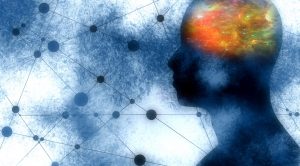Definition
noun
(cytogenetics) A modified reverse chromosomal banding technique wherein the telomeres are strongly stained as the faint R-banding still occurs over the rest of the chromosome
Supplement
Cytogeneticists use banding techniques to determine the characteristic pattern of light and dark bands on a chromosome under a microscope. They make use of diagrams referred to as chromosome ideograms to determine the relative sizes and the banding patterns of chromosomes. By applying specific stains, the banding patterns become apparent. The different types of banding are Giemsa (G-) banding, reverse (R-) banding, constitutive heterochromatin (C-) banding, quinacrine (Q-) banding, Nucleolar Organizer Region (NOR-) banding, and telomeric R (T-) banding.
Reverse banding is a banding technique wherein the banding pattern is the reverse of G-banding (thus, the name). In G-banding, the banding pattern is a series of light and dark bands on a chromosome. Regions in the chromosome that stain lightly tend to be euchromatic, rich with guanine and cytosine and more transcriptionally active whereas regions that stain darkly tend to be heterochromatic, rich with adenine and thymine and less transcriptionally active. In reverse banding, the dark regions of the chromosomes tend to be euchromatic and rich in guanine and cytosine whereas the light regions tend to be heterochromatic and rich in adenine and thymine. Thus, reverse banding produces bands that are complementary to G-bands.
In T-banding, the telomeres are strongly stained as the faint R-banding still occurs over the rest of the chromosome (thus, the name).
See also:
- banding pattern
- reverse banding
- banding
- karyotype
- chromosome







